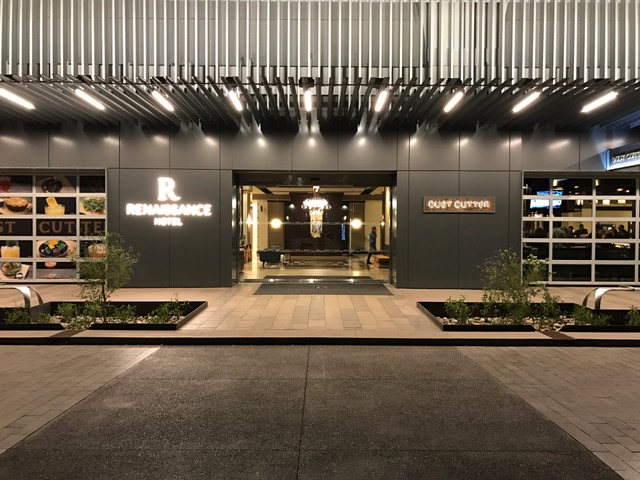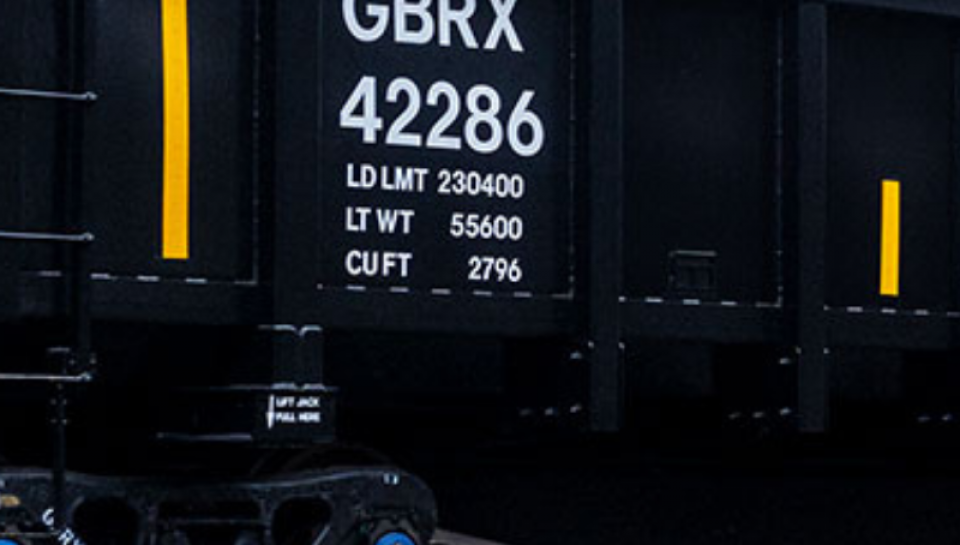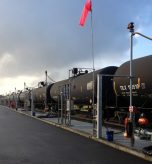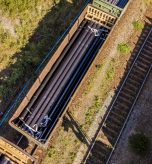Introduction
A leading specialty chemical manufacturer sought to optimize their transportation strategy for moving 350,000 metric tons of high-value chemical products annually from their Wisconsin production facility to a processing plant in Illinois. The 343-mile route presented significant logistical challenges, with concerns over product integrity during transit. Traditional trucking solutions were becoming cost-prohibitive, and the client needed a comprehensive analysis of alternative transport methods. Our firm was engaged to evaluate rail as a viable solution and develop an efficient, cost-effective logistics strategy that would maintain product quality while providing both operational flexibility and long-term economic advantages.
At A Glance
Our supply chain professionals conducted a comprehensive analysis of transportation options for a specialty chemical producer, yielding a unit train rail solution that delivered $22/ton savings compared to alternative transportation methods. Our strategic approach balanced infrastructure investments with operational efficiency to create a sustainable logistics plan.
Requirements
- Development of a specialized transportation solution for temperature-sensitive chemical products requiring specific handling protocols
- Design of an adaptable logistics network capable of managing 350,000 metric tons annual volume with minimal product degradation
- Creation of a supply chain model delivering cost efficiency while meeting strict regulatory compliance standards
The Challenge
The client’s Wisconsin-based specialty chemical facility needed a reliable transportation solution to move its product to a processing facility in Illinois. Their existing transportation arrangement was becoming increasingly cost-inefficient, with per-ton costs exceeding $90 through traditional methods. The specialized nature of the chemical product required careful handling, with product deterioration beginning after extended transit times, creating a critical time sensitivity factor.
Additionally, the client faced significant infrastructure constraints, as their facility lacked adequate loading capabilities for high-volume shipments. Any proposed solution would require substantial capital investment in new infrastructure. The logistics complexity was further compounded by the need to maintain consistent volumes to the processing facility while ensuring regulatory compliance for hazardous material transportation.
Market conditions had also created rising concerns about long-term transportation costs, requiring a solution that would remain economically viable for the duration of planned operations. With an annual tax credit of $77 per ton available for this specialty chemical transport, finding a solution that maximized this incentive while minimizing transportation expenses became a critical business imperative.
PraxiChain Solution
- Designed and implemented a unit train solution reducing transportation costs to $36/ton ($24/ton rail rate + $12/ton equipment cost), delivering $22/ton savings compared to alternative shipping methods
- Developed specialized 190-car fleet configuration with two 93-car sets operating on a 14-day cycle, with product loading over 5 days to maintain optimal product integrity
- Created customized rail infrastructure blueprint requiring $13.3M-$16.9M capital investment, including dual loop tracks with a 130-car capacity each
- Negotiated direct unit train service agreement with Class I railroad providing 1-2 day transit time versus 10 days for manifest service
- Implemented staging and storage protocol allowing for up to 3 days of product storage (3,200 tons) onsite to buffer production variability
Results
The implemented rail transportation solution delivered immediate and sustainable benefits to the client’s supply chain operations. Transportation costs were reduced from $84-94 per ton under the previous logistics model to $36 per ton with the new rail solution, representing a 57-62% cost reduction. This created $41 per ton in available margin when factoring in the $77 per ton available tax credit.
The unit train service reduced transit time to 2 days, compared to 10 days for manifest rail service, minimizing product degradation concerns and enabling more consistent delivery schedules. Our firm’s specialized loading configuration and infrastructure design provided operational flexibility, with the capacity to handle production variations while maintaining shipment consistency.
The capital investment in dedicated rail infrastructure created a long-term competitive advantage, with projected ROI achieved within 4 years based on volume commitments. The client also benefited from reduced carbon emissions associated with rail transport compared to previous truck-based logistics, supporting their corporate sustainability objectives. The strategic partnership negotiated with the railroad positioned the client for continued logistics optimization as their business continues to grow.















